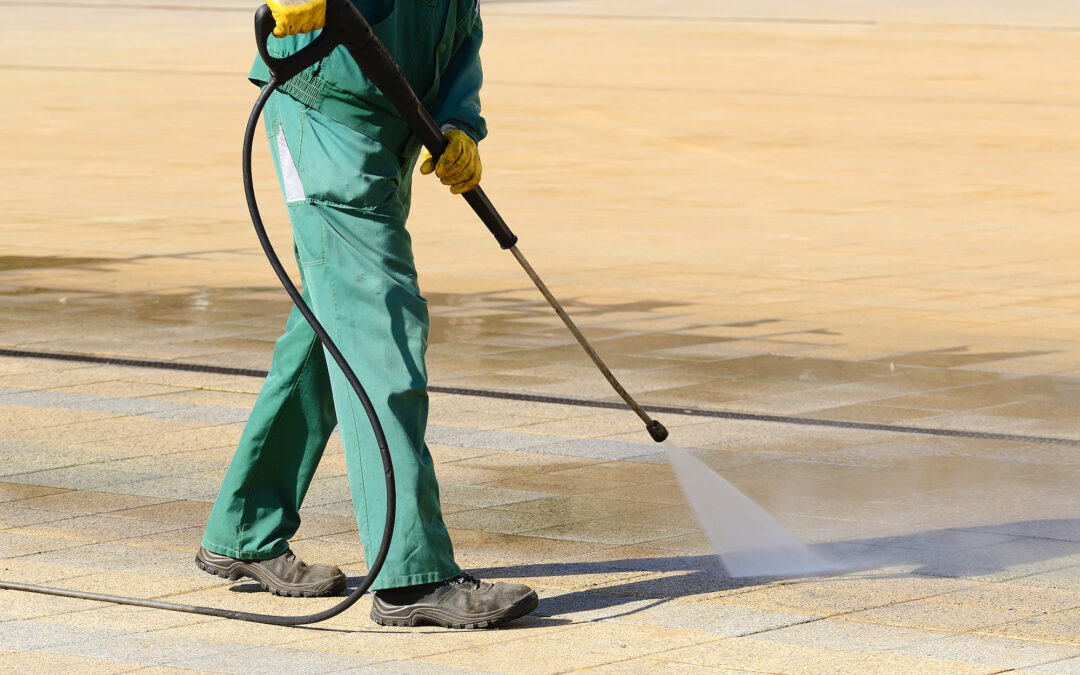Pressure washers have many uses; they are used to clean large areas, including parking lots, sidewalks, buildings, vehicles, and equipment or machinery. Although they are very useful when cleaning around the workplace, many different types of hazards and injuries can occur while using a pressure washer. According to the Consumer Product Safety Commission, an estimated 6,057 people went to an emergency room with injuries related to pressure washers in 2018. The high-pressure spray can cause serious injury if not operated correctly.
Discussion Points:
• What is pressure washing?
• What are some hazards involving the pressure washer?
• What PPE should be worn when using a pressure washer?
• Can the pressure washer cause damage?
• What are the benefits of pressure washing?
Discussion:
Pressure washers have different nozzle types for a variety of applications. They are color-coded and create fan patterns ranging from zero to 40 degrees; the different fan degrees allow for good impact pressure and cleaning coverage. When using a pressure washer that is also supplied with heat, avoid turning up the pressure. Using heat can be more effective when removing debris but can also create more chances of a severe burn injury.
Potential injuries from the high-pressure water spray include lacerations or other wounds from flying debris or hose connection failures, sprains or strains from a slip or a fall, burns from hot water or hot machine components, and pressure injection injuries. According to the Centers for Disease Control and Prevention, a pressure washer’s intense spray can cause Pressure injection injuries that often appear insignificant and may result in an injured person delaying treatment, and increasing risk of infection, disability, or amputation. Supervisors must confirm that employees are trained in operating the pressure washing equipment before allowing them to use it unsupervised and that the equipment manufacturer’s directions and OSHA regulations are observed and followed at all times. Employees should always read the operating instructions and the warning labels on the equipment and wear the proper PPE, including safety toe boots, insulated gloves, safety glasses, a face shield, and waterproof coveralls.
The employee must perform a pre-operational check of the equipment; Inspect the condition of the high-pressure hose, spray gun, and wand; plug the pressure washer into a properly grounded receptacle; examine the work area before beginning any pressure washing task; ensure the equipment follows the OSHA requirements on the configuration of equipment; never point it at yourself or anyone else. Should you have any questions about operating the pressure washer, refer to the manufacturer’s manual or ask a supervisor.
As always, be safe out there!


Recent Comments